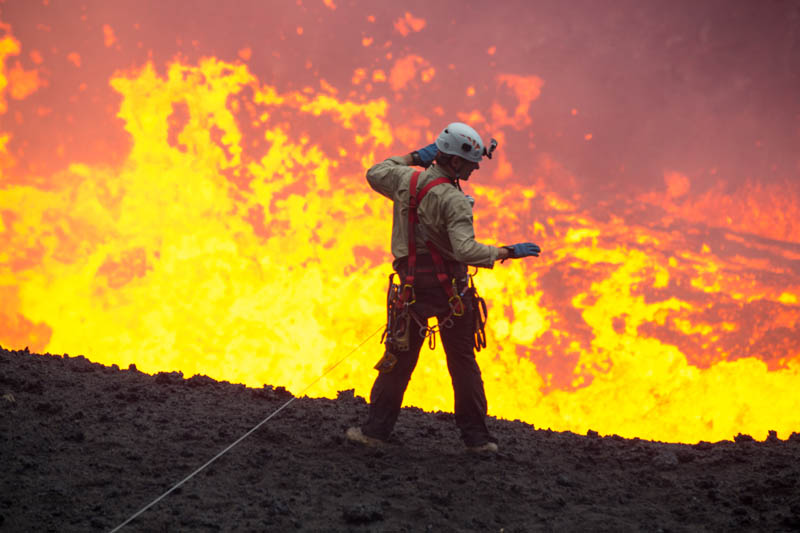“There have been times when I’ve had lightning strikes so close I can feel the heat on my face, [times] I’ve been hit by massive hail, [times] I’ve been caught inside a tornado […],” professional storm chaser George Kourounis said.
While Kourounis was studying to become a sound engineer, he worked in music, film, and television studios where he developed a passion for television and outdoor exploration. Eventually, Kourounis began spending increasing amounts of time shadowing experts and chasing storms. Before long, he found himself receiving calls from big news stations, such as CNN and National Geographic, to cover extreme weather events across the globe. Although he never imagined he’d become a professional adventurer and storm chaser, George Kourounis is currently living his dream.
As the co-creator and host of the award-winning television series Angry Planet, Kourounis has documented his explorations across all seven continents.
Kourounis takes on many different roles as a storm chaser. For tornados, his task is usually to document the storm; however, in a hurricane, he often works with the Cyclone Research Group to measure the strongest winds and other weather-related statistics. Kourounis has worked with scientists in numerous different fields, including inside volcanoes for geologists.
“Scientists [and weather reporters] like working with me sometimes because I can get to some of the places where they can’t, or perhaps choose not to [go],” Kourounis said.
Through a science grant from National Geographic, in 2014, Kourounis led an expedition to Turkmenistan to collect soil samples from the bottom of a sunken natural gas pit. This crater, known as the “Doorway to Hell,” is no ordinary crater. At 30 metres deep and 80 metres wide, the collapsed oil mine has been burning on naturally-released methane gas ever since it was lit on fire. The soil samples he collected underwent DNA analysis, proving, in a noteworthy scientific discovery, that extremophile bacteria were living at the bottom of this burning pit.
“Plus, I’m the only person who has ever set foot in this flaming-gas crater,” Kourounis joked. “Twelve people have been on the moon, but only one person has been to the bottom of this crater.”
In 2005, Kourounis and his team took on the biggest storm of their careers: Hurricane Katrina. They set up camp in Gulfport, Mississippi in a steel-reinforced concrete parking garage.
“Katrina was so strong that the National Weather Service was sending out apocalyptic warnings about how appliances like refrigerators and small cars were going to become deadly airborne missiles,” Kourounis said. “We didn’t know what was going to happen over the next 24 hours.”
As the storm approached, it grew in strength, shaking their bunker “like a blender” and raising the sea level by 10 metres.
“In a tornado, you’re on the outside looking in, but, in a hurricane, you’re in the middle,” Kourounis explained. “It’s just a cacophony of breaking glass, howling wind, and flying debris, every raindrop feels like a needle hitting you.”
In addition to chasing storms, Kourounis spent 2015 travelling the world and documenting the effects of climate change. Throughout his years as a storm chaser, he has witnessed an increase in frequency and severity of the extreme events he covers.
For Kourounis, curiosity drives his work.
“[That] moment in time when a tornado is touching down, a volcano is erupting, or when a hurricane is making landfall,” described Kourounis. “For me, that’s what exploration is.”









